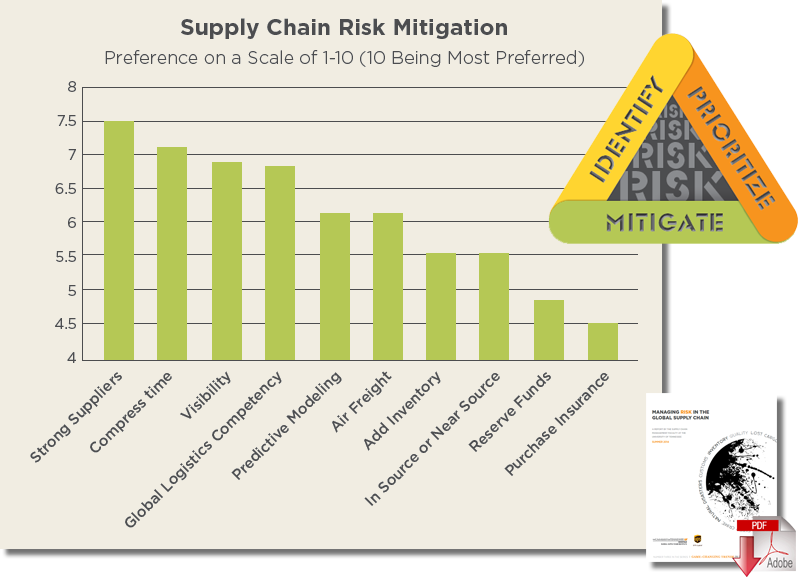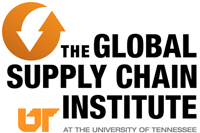Study Shows Supply Chain Risk Mitigation Strategies Lacking
Insurance seen as major way to mitigate losses, but not used by many companies' as avoidance strategy.
While many supply chain executives are well aware of the risks facing their supply chains and the undesirable consequences, many are still not developing and executing strategies to properly manage identified risks.
This finding is according to a new study, Managing Risk in the Global Supply Chain, sponsored by UPS Capital Corporation, and conducted by the Global Supply Chain Institute at the University of Tennessee.
UPS Capital is a business unit of UPS that enables smarter trade through cargo and parcel insurance, trade finance and payment solutions.
One of the studies major findings was, of the 150+ firms surveyed, 90 percent did not formally quantify supply chain risk when outsourcing production, and not one of the surveyed participants used outside expertise to help assess supply chain risks.
“We were surprised by some of the findings regarding the lack of mitigation strategies,” said Dr. Paul Dittmann, executive director of the Global Supply Chain Institute and the study’s author.
“The supply chain is one area of a company where executives are faced with balancing operational efficiencies, all without actually having direct control over many of the moving parts, thus making risk mitigation strategies almost essential to operations. Any business that does not have some basic form of risk mitigation plans in place is simply gambling with its existence.”
Supply Chain Risk Ratings
The No. 1 risk on the minds of those surveyed was potential quality problems. Long global supply lines make it very difficult to recover from quality issues.
For example, Whirlpool decided years ago to outsource the production of dishwasher water seals to a Chinese supplier for a net savings of $0.75 per unit. This totaled over $2 million in annual savings. But soon after the arrangement was made, the Chinese supplier changed to a different rubber supplier. The seals made from this new rubber leaked in dry climates, causing a failure rate of nearly 10 percent.
By the time Whirlpool discovered the problem, over two million dishwashers had been produced with the defective seal, and two months worth of supply was in transit on the ocean. This cost the company millions of dollars and destroyed all savings from the project for over three years. Whirlpool could have avoided this problem by doing more planning and putting robust quality controls in place.
Those controls now exist at Whirlpool and are excellent for the company as a whole, but it took a crisis to fully motivate action.
The second-ranked risk concerns the requirement for increased inventory due to a longer global supply chain. Caught up in the allure of low cost labor, 20 years ago companies rushed to Asia.
This very long, extended supply chain requires companies to carry at least 60 to 75 days of supply in additional inventory. Most firms now understand the stress this additional inventory places on their company’s working capital and cash flow. When contending with extremely long global supply lines, supply chain professionals find it extremely difficult to achieve the aggressive inventory turnover goals given to them by the CEO/CFO.
Both supply chain professionals and CFOs agree that burdening a company’s working capital with the cost of added inventory requires a focused management effort to minimize the impact. Most supply chain professionals are not familiar with the available financial products that allow companies to maximize the amount of cash that can be borrowed against trading assets, such as inventory warehoused internationally and in transit inventory.
Financing products can be especially helpful to growing companies that need to maximize cash flow. A properly structured working capital loan or other financial bridge can help a company minimize financial strain and work its way through identified risks.
For example, one company had a 270-day cycle time from its Chinese supplier, tying up cash in inventory for nearly nine months. By assessing the situation and quantifying the need for additional cash flow, the company used its in transit inventory as collateral for a loan, thus preserving cash flow.
Natural disasters stand as the No. 3–ranked risk, no doubt brought to top of mind with recent high profile natural disasters such as the Japanese tsunami and Thailand flooding.
Of least concern to supply chain professionals is terrorism and piracy, followed by customs delays. Firms have gotten much savvier about dealing with customs issues. They are taking full advantage of programs that speed customs processing, such as C-TPAT.
This study also yielded other important findings, including that most participants’ companies have risk managers somewhere in the company, often in the legal and finance areas. However, most of these risk managers are not aligned to supply chain risks, resulting in significant gaps in companies’ overall mitigation strategies.
“We all know the threats are very real, and there are multiple ways to mitigate risk,” said Dave Zamsky, vice president of marketing for UPS Capital. “While supply chain executives acknowledge insurance as a major way to mitigate losses, it is not on their radar screens.
Two of the easiest risk mitigation strategies to implement are financial and insurance solutions. Providers like UPS Capital have a vested interest in helping businesses avoid losses and prepare for the unknown with products like our Flexible Parcel Insurance and Cargo Insurance. In addition, financial services such as UPS Capital’s Cargo Finance, Global Asset Based Lending (GABL), or Credit Insurance offset risks and improve cash flow. A properly structured loan or other financial bridge can help reduce a company’s financial risk and protect the bottom line with minimal operational changes.”
About the Study
The study encompassed a quantitative survey of more than 150 supply chain executives and qualitative interviews with executives from six companies. The companies surveyed included both interviews and written responses. Companies ranged in size from $300 million to $80 billion and covered a cross section of industries.














